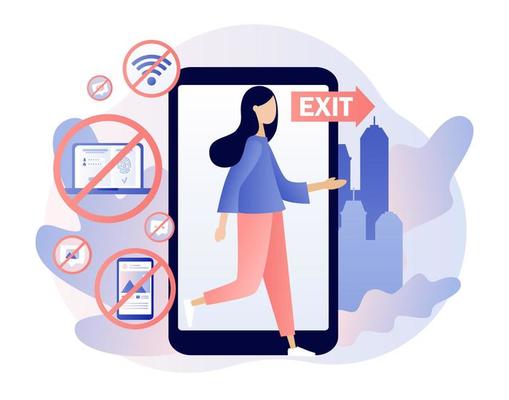
Practical Techniques to Cultivate Presence and Well-being in a Hyperconnected World
Introduction
In a world brimming with constant connectivity, the art of mindfulness offers a haven of clarity and peace. At its core, mindfulness is the practice of being fully present and engaged in the current moment without judgment. It invites us to observe our thoughts, emotions, and surroundings with openness and curiosity rather than reaction or critique. This simple yet profound practice enables individuals to reconnect with their inner selves amidst the noise of the modern world.
In today’s hyperconnected environment, the relevance of mindfulness has reached unprecedented levels. Technology, while offering convenience and global interconnectivity, has also brought about challenges unique to the digital age. Our devices demand our attention every waking moment, fostering a culture of perpetual distraction. Notifications, social media updates, and the unrelenting flow of information contribute to an illusion of productivity, often leaving us feeling overwhelmed and unfulfilled. This relentless cycle distances us from authentic experiences and diminishes our ability to focus, reflect, and truly connect with others.
The challenges of the digital age are manifold. The constant ping of notifications pulls our attention away from meaningful conversations and tasks. Multitasking, often celebrated as a skill, fragments our focus, reducing both the quality and depth of our efforts. Information overload, coupled with the pressure to stay “up-to-date,” creates a sense of urgency that fosters stress and anxiety. Amidst this chaos, many struggle to find moments of genuine rest or introspection, leaving them emotionally depleted.
This is where mindfulness becomes essential. Mindfulness matters today because it provides a counterbalance to the digital deluge. It reminds us to pause, breathe, and reclaim control over our attention. By practicing mindfulness, we can bring intention into our interactions with technology and people, ensuring that our time and energy align with our values and priorities. Mindfulness equips us to navigate life with greater awareness, emotional balance, and purpose, helping us to break free from the autopilot mode that technology often fosters.
The purpose of this article is clear: to empower readers with practical, actionable techniques for cultivating mindfulness in a technology-driven world. Whether you’re seeking to improve focus, reduce stress, or foster more meaningful connections, mindfulness offers a path to reclaiming presence and well-being. Together, we will explore strategies to help you engage with the digital world intentionally, embrace the present moment, and thrive amidst modern challenges.
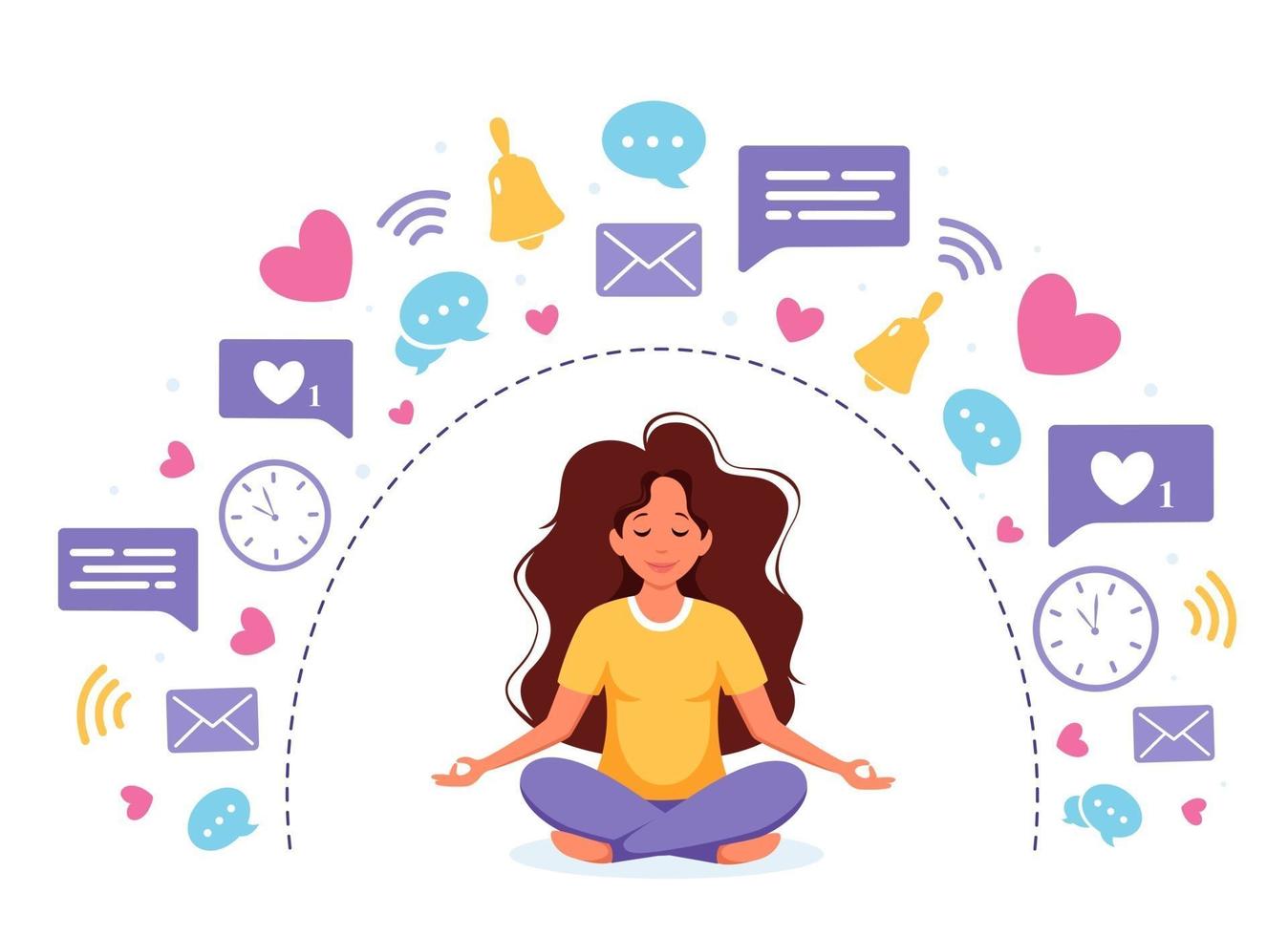
The Digital Age and Its Impact on Well-being
The digital age has revolutionized how we live, work, and connect with the world. While it offers incredible conveniences and opportunities, it also comes with significant trade-offs that impact our well-being. Understanding these effects is essential for cultivating healthier relationships with technology and ourselves.
Negative Effects of Excessive Technology Use
- Sleep Disturbances
The omnipresence of screens has drastically altered our sleep patterns. Blue light emitted by phones, tablets, and computers interferes with melatonin production, the hormone responsible for regulating sleep. Scrolling through social media or binge-watching videos before bed stimulates the mind, making it harder to wind down. Over time, poor sleep quality leads to fatigue, irritability, and diminished cognitive performance. - Stress and Anxiety
The constant barrage of notifications and messages creates a sense of urgency, leading to heightened stress levels. Social media amplifies this by fostering comparison and competition, often resulting in feelings of inadequacy. News cycles, filled with alarming headlines, can also contribute to a pervasive sense of anxiety. This relentless stimulation leaves little room for mental rest or emotional recovery. - Reduced Attention Spans
In the digital age, multitasking has become the norm. We rapidly switch between tasks, apps, and screens, which fragments our focus. This has led to a significant decline in our ability to sustain attention on a single activity, impacting productivity and the depth of our engagement. The overstimulation of our brains by technology reduces our capacity to be fully present in the moment. - Superficial Social Connections
While technology has made it easier to stay connected, it often replaces deeper, face-to-face interactions with surface-level engagements. Social media fosters the illusion of connection, but likes, shares, and comments often lack the emotional depth of meaningful relationships. This can lead to loneliness and a diminished sense of community, even amidst a sea of digital connections.
The Attention Economy
Modern apps and platforms are designed to capture and hold our attention for as long as possible. This business model, often referred to as the attention economy, relies on exploiting our brain’s reward systems.
- Dopamine Loops
Every like, comment, or notification triggers a small release of dopamine, the brain’s feel-good chemical. These micro-rewards create addictive patterns, compelling users to return to their devices repeatedly. Over time, this reliance on external validation can lead to compulsive behavior and diminished intrinsic satisfaction. - Infinite Scrolling and Gamification
Features like infinite scrolling, autoplay, and gamification are intentionally designed to minimize friction and keep users engaged. These mechanisms create a cycle of consumption that is hard to break, leading to excessive screen time and a loss of control over our digital habits. - The Cost of Hyperconnectivity
While these platforms thrive on our engagement, the cost is often our mental health, focus, and emotional well-being. Recognizing this manipulation is the first step toward reclaiming autonomy over our attention.
The Call for Self-awareness
In a world designed to distract, self-awareness becomes a revolutionary act. By taking a closer look at our technology habits, we can identify patterns that undermine our well-being and begin to make intentional changes.
- Reflect on Usage
Take time to evaluate how much time you spend on devices and the emotions associated with their use. Are you using technology to fill voids, escape discomfort, or avoid face-to-face interactions? - Audit Digital Behaviors
Identify which apps or platforms dominate your attention. Do they contribute to your growth and happiness, or do they drain your energy and time? - Set Intentions
Approach technology with purpose. Define what you want to achieve before using a device or app, and stick to those goals. Replace passive consumption with intentional engagement to reclaim your time and focus.
By understanding the impacts of technology on our well-being and embracing self-awareness, we can take the first steps toward creating a healthier and more balanced relationship with the digital world. Mindfulness provides the tools to navigate this journey with intention and clarity.
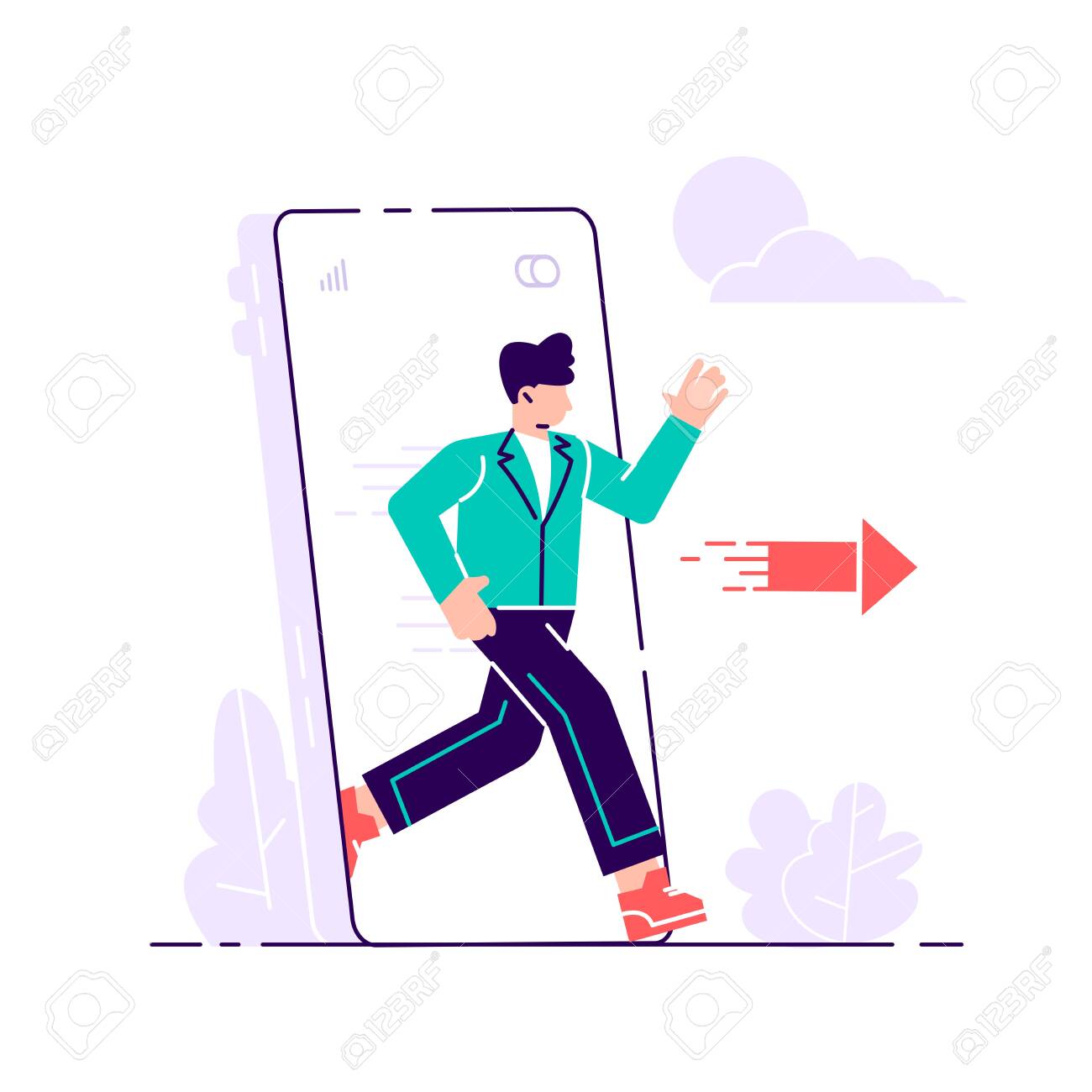
Practical Strategies for Cultivating Mindfulness
The digital age may pose challenges to mindfulness, but it also provides opportunities to reclaim presence and purpose. By adopting intentional practices, individuals can create a balanced relationship with technology and cultivate a deeper connection with themselves and others. Below are actionable strategies to help incorporate mindfulness into daily life.
- Digital Detox: Periodic Disconnection to Reconnect
A digital detox involves consciously stepping away from technology to create space for self-reflection and real-world engagement. These breaks help reset the mind, reduce stress, and reintroduce the joys of being present in the moment.
Tips for Implementation
- Start Small: Begin with manageable breaks, such as no-phone mornings or evenings, to ease into the practice.
- Extend Gradually: Progress to longer tech-free periods, such as digital-free weekends, or explore the benefits of retreats designed to disconnect from technology entirely.
- Engage in Offline Activities: Use detox periods to engage in enriching activities like journaling, hiking, gardening, or creative hobbies. These pursuits provide a sense of fulfillment and grounding.
- Mindful Technology Use
Rather than eliminating technology, mindful usage emphasizes intentionality and balance, ensuring that technology enhances rather than detracts from life.
Set Boundaries
- Limit technology use to specific timeframes or tasks, avoiding aimless browsing.
- Designate “no-phone” zones, such as during meals, family time, or the hour before bedtime, to promote genuine connection and relaxation.
Identify Triggers
- Recognize patterns of mindless scrolling or excessive usage. Are certain apps or activities consuming more time than intended?
- Observe emotional states—boredom, stress, or procrastination—that often lead to unproductive engagement.
Practice Mindful Engagement
- Pause before clicking a link or opening an app. Ask yourself, “Does this align with my intentions or needs?”
- Utilize tools like app timers, focus modes, or productivity extensions to set limits and stay on track.
- Core Mindfulness Practices
These foundational techniques foster awareness, reduce stress, and anchor the mind in the present moment.
Breathing Exercises
- Introduce simple methods like the 4-7-8 technique: inhale for 4 seconds, hold for 7 seconds, and exhale for 8 seconds. This calms the nervous system and centers the mind.
- Encourage readers to use breathing exercises during moments of stress, before meetings, or to transition between tasks.
Body Scan Meditation
- Guide readers through a practice of scanning their body from head to toe, paying attention to physical sensations.
- This practice promotes relaxation and deepens the connection between mind and body, especially after prolonged screen time.
Mindful Walking
- Encourage transforming routine activities into meditative moments by focusing on the sensation of each step, the rhythm of breathing, and the surrounding environment.
- Suggest walking outdoors to enhance the experience with natural elements like sunlight and fresh air.
Guided Meditation Apps
- Recommend accessible tools like Headspace, Calm, or Insight Timer, which offer structured meditations for managing stress, improving focus, and fostering mindfulness amidst digital distractions.
- Integrating Mindfulness into Daily Life
Mindfulness becomes truly transformative when woven into everyday routines.
Single-tasking
- Advocate for focusing on one activity at a time, whether working on a project, eating a meal, or having a conversation. This improves concentration and enhances the quality of the experience.
Mindful Communication
- Develop habits of active listening and empathy. Encourage readers to fully engage during conversations, setting devices aside to foster genuine connection.
Gratitude Journaling
- Suggest ending the day by reflecting on three things they’re grateful for. This simple practice shifts focus away from distractions, cultivating positivity and awareness of life’s blessings.
By adopting these practical strategies, individuals can break free from the grip of technology’s distractions and foster a more mindful, intentional, and fulfilling existence. These techniques not only restore balance but also pave the way for a deeper sense of well-being in a hyperconnected world.
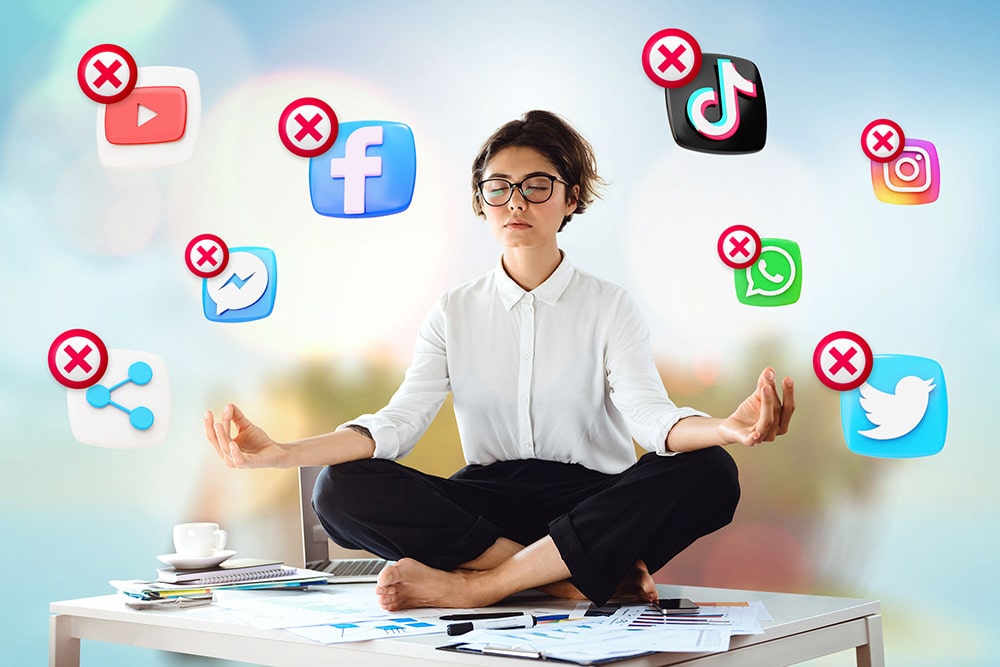
Designing a Mindful Digital Environment
Creating a mindful digital environment is crucial for reducing digital overwhelm and cultivating intentional technology use. By organizing and optimizing digital spaces, individuals can promote clarity, focus, and a healthier relationship with technology.
- Declutter Digital Spaces
A cluttered digital environment can mirror and amplify mental clutter. Streamlining your digital space can create a sense of order and ease.
Organize Files and Apps
- Simplify Home Screens: Remove unnecessary apps and organize essential ones into categorized folders (e.g., productivity, wellness, utilities).
- Clear Downloads and Files: Periodically sort through and delete unneeded files, emails, and screenshots to minimize digital chaos.
- Adopt Minimalism: Keep your home screen clean, limiting visible icons to a few high-priority apps.
Reduce Notification Overwhelm
- Audit notification settings, allowing only essential alerts, like calendar reminders or urgent communications.
- Curate Social Media Feeds
Social media can shape our mood and mental state. A mindful approach to curation ensures your feeds inspire positivity and growth.
Follow Intentional Content
- Seek out accounts that align with your values, promote learning, or provide uplifting and meaningful content. Examples include wellness experts, educators, or artistic creators.
Remove Negative Influences
- Unfollow or Mute Accounts: Reduce exposure to content that triggers comparison, anxiety, or negative emotions.
- Use tools like “mute” features to stay connected with people without engaging with posts that may not serve your well-being.
- Optimize Phone Settings for Mindfulness
Simple tweaks to phone settings can transform a device from a source of distraction to a tool for intention.
Turn Off Non-Essential Notifications
- Silence notifications from social media apps, promotional emails, or other non-urgent sources.
- Enable “Do Not Disturb” or “Focus Mode” during specific times, such as work hours, meals, or before bedtime.
Enable Grayscale Mode
- Switch your phone to grayscale to reduce its visual allure, particularly for apps designed to capture attention with vibrant colors.
Set an Intentional Wallpaper
- Use a calming or motivational image for your wallpaper, such as nature scenes, a minimalist design, or a quote that inspires mindfulness.
- Leverage Technology for Mindfulness
While technology can be a source of distraction, it also offers tools to support mindfulness and intentionality.
Screen-Time Trackers
- Use built-in features like Apple’s Screen Time or Android’s Digital Wellbeing to monitor and manage device usage patterns.
Focus Apps
- Forest: Helps users stay focused by planting a virtual tree that grows when you avoid using your phone.
- Pomodoro Timers: Encourage productive work intervals with breaks to maintain focus and energy.
Digital Well-being Dashboards
- Explore dashboards that provide insights into app usage, helping you identify and reduce excessive engagement.
By intentionally shaping your digital environment, you can foster a sense of control and mindfulness in your interactions with technology. These practical steps not only reduce digital stress but also enhance focus, emotional well-being, and overall productivity.
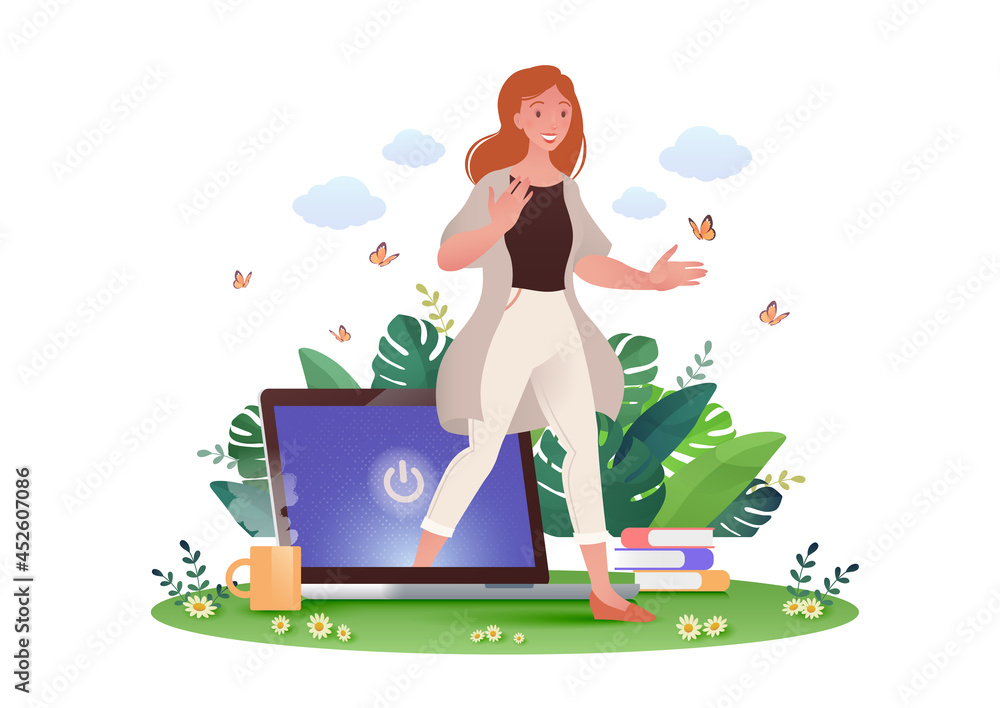
Benefits of Mindfulness in the Digital Age
Mindfulness offers a powerful antidote to the challenges posed by hyperconnectivity. By incorporating mindfulness practices into daily life, individuals can experience profound and lasting benefits that enhance personal and professional well-being.
- Enhanced Focus and Productivity
In a world filled with constant notifications and endless information streams, maintaining focus can be challenging. Mindfulness empowers individuals to reclaim control over their attention.
How Mindfulness Improves Focus
- Attention Control: Regular mindfulness exercises, such as meditation and single-tasking, train the mind to resist distractions and sustain focus on the task at hand.
- Reduced Mental Clutter: By staying present, individuals can prioritize effectively and allocate mental resources more efficiently.
Practical Impact
- Work Efficiency: Focused attention improves the quality and speed of task completion.
- Creative Problem-Solving: A clear mind allows for innovative thinking and fresh perspectives.
- Stress Management
Stress is an inevitable part of life, but mindfulness equips individuals with tools to navigate it more effectively.
How Mindfulness Reduces Stress
- Cortisol Reduction: Mindful breathing and meditation have been shown to lower stress hormones, such as cortisol, promoting relaxation.
- Resilience to Stressors: A present-focused mindset minimizes overthinking and catastrophizing, helping individuals respond calmly to challenges.
Practical Impact
- Day-to-Day Peace: Regular mindfulness practices create moments of calm amidst the chaos of modern life.
- Long-Term Benefits: Reduced stress levels contribute to improved physical health, including lower blood pressure and reduced risk of stress-related illnesses.
- Improved Emotional Regulation
Mindfulness fosters a deeper awareness of thoughts and emotions, enabling individuals to respond thoughtfully rather than react impulsively.
How Mindfulness Supports Emotional Regulation
- Increased Self-Awareness: Mindfulness helps individuals recognize emotional triggers and patterns.
- Cultivated Patience: Practicing presence allows individuals to pause, reflect, and choose intentional responses.
Practical Impact
- Personal Growth: Improved emotional control enhances self-confidence and decision-making.
- Conflict Resolution: Thoughtful responses reduce misunderstandings and promote harmonious interactions.
- Better Sleep Quality
Sleep disruptions caused by excessive screen time and overstimulation are common in the digital age. Mindfulness can help restore restful sleep patterns.
How Mindfulness Enhances Sleep
- Screen Time Reduction: Mindfulness encourages detaching from devices before bedtime, reducing blue light exposure and mental stimulation.
- Relaxation Techniques: Practices like body scans and mindful breathing calm the mind and prepare it for sleep.
Practical Impact
- Improved Restfulness: Consistent, high-quality sleep supports physical health and cognitive functioning.
- Increased Energy Levels: A well-rested body and mind enhance daily productivity and mood.
- Strengthened Relationships
Mindfulness encourages authentic presence, empathy, and deeper connections with others.
How Mindfulness Improves Relationships
- Mindful Communication: Actively listening and being present in conversations build trust and understanding.
- Emotional Attunement: Mindfulness enhances the ability to recognize and validate others’ emotions.
Practical Impact
- Genuine Bonds: Mindfulness fosters meaningful relationships rooted in mutual respect and empathy.
- Conflict Mitigation: Improved communication reduces misunderstandings and promotes resolution.
By practicing mindfulness, individuals can transform their relationship with technology, themselves, and others. The benefits extend beyond managing digital distractions—they foster a life of balance, presence, and connection, empowering individuals to thrive in an increasingly complex world.

Conclusion
Mindfulness in the digital age is not merely a practice—it’s a profound shift in perspective that empowers individuals to reclaim their attention, balance, and well-being amidst the complexities of modern life. By cultivating presence, we can transform our relationship with technology and live more intentional, fulfilling lives.
Reinforce the Value of Mindfulness
Mindfulness is more than a remedy for distractions; it’s a gateway to greater self-awareness, emotional intelligence, and genuine connection. Practicing mindfulness allows us to navigate the digital world with clarity and purpose, freeing us from the constant pull of notifications and noise.
Encourage Gradual Adoption
For lasting impact, mindfulness must be approached as a journey rather than a quick fix. Start small:
- Begin with a few minutes of mindful breathing or a brief digital detox each day.
- Gradually expand practices to include mindful communication, single-tasking, or guided meditations.
- Be patient; meaningful change takes time and consistent effort.
Highlight Its Long-Term Benefits
The rewards of mindfulness extend far beyond the immediate relief of stress or distraction. Over time, mindfulness enriches every aspect of life by:
- Improving mental clarity and productivity.
- Enhancing emotional resilience and well-being.
- Strengthening relationships and fostering empathy.
- Creating a foundation for a balanced, meaningful existence.
Call to Action
Mindfulness is a personal journey, but it’s also one we can share to inspire and uplift others.
- Resources for Exploration:
Explore apps like Calm or Insight Timer, or delve into books such as The Miracle of Mindfulness by Thich Nhat Hanh. - Community Building:
Share your mindfulness journey, join workshops, or create local groups to practice together. - Take Action:
Begin today with one small step toward a more mindful life.
Support MEDA Foundation’s Mission
Mindfulness aligns with the MEDA Foundation’s vision of fostering well-being, inclusivity, and empowerment. Join us in creating self-sustaining ecosystems and supporting programs that promote mindfulness and balance for all.
- Participate: Volunteer for initiatives that support holistic development.
- Donate: Contribute to expanding our reach and impact. Every effort brings us closer to creating a more mindful, compassionate world.
Book References









